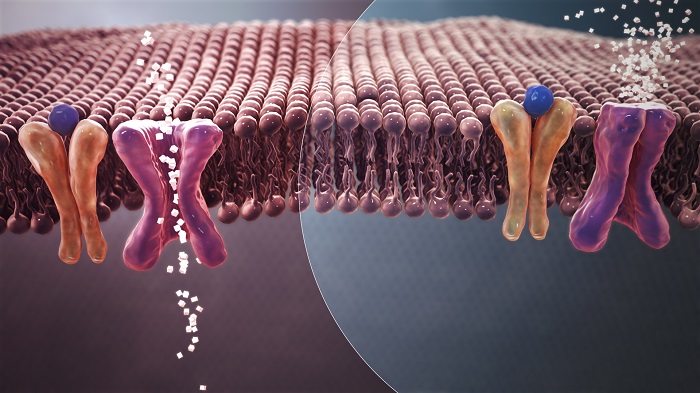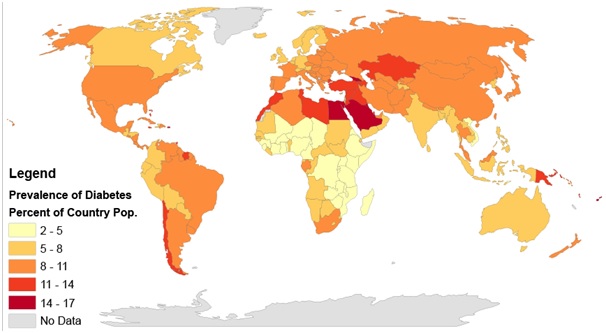Notifications

3 minutes, 30 seconds
-207 Views 0 Comments 0 Likes 0 Reviews

In this editorial, the author has analysed the role of Quantitative structure-activity relationship (QSAR) methods in antidiabetic drug discovery. The author has summarised the trends and has suggested the directions in which QSAR research should focus on the design of novel drugs for diabetes.
Introduction:
QSAR techniques are contributing in a major way to drug design by improving the potency, efficacy, and selectivity of the lead compounds in drug design. This is also true for drug design for diabetes, where techniques like virtual screening and 3D-QSAR are helping scientists design drugs with reduced side effects and increased efficacy and potency.

Figure 1: Mechanism of normal blood sugar (white crystals) absorption (left) vs. insulin resistance in type 2 diabetes (right).
According to an estimate by the International Diabetes Federation, presently about 9.3 percent of the world’s population in the age group of 20-79 years suffers from diabetes, which is estimated to increase to 10.9 percent by 2045 [1], [2]. Inflammation, epigenetics, and autophagy are considered the three main factors responsible for the onset of diabetes. [3], [4]The main questions that antidiabetic drug discovery faces today are: how to encounter insulin resistance; alternatives to the parenteral route of administration (as patient compliance for it is an issue, low bioavailability, and immediate release of oral drugs for diabetes due to which dosage frequency has to be increased); designing drugs that do not show many adverse effects and can target metabolic syndrome–X along with diabetes. [5]

Figure 2: Rates of diabetes worldwide in 2014. The worldwide prevalence was 9.2 percent. In India, it is 8.9 percent as of 2020.
QSAR and drug targets for diabetes:
The multidirectional and translational nature of antidiabetic drug discovery makes it ideal for QSAR studies. Evidence does point out that QSAR approaches would be a chief player in antidiabetic drug discovery. Predominantly, QSAR investigations have been carried out on five chief drug targets in diabetes, viz., peroxisome proliferator-activated receptor (PPAR), sodium-dependent glucose cotransporter 2 (SGLT2), protein tyrosine phosphatase 1B (PTP-1B), dipeptidyl peptidase IV (DPP-IV), and glycogen synthase kinase 3β (GSK-3β). Various QSAR models have been designed for PPAR full agonists to develop insulin-sensitising PPAR modulators that have very few adverse effects. Many QSAR studies have been performed on another attractive drug target for diabetes, PTP-1B; however, its high homology with T-cell protein-tyrosine phosphatase (TCPTP) complicates the drug design. For the design of the inhibitors of DPP-IV, GSK-3β, and SGLT2, mainly comparative molecular field analysis (CoMFA) and comparative molecular similarity indices analysis (CoMSIA) have been used in 3-D QSAR models.
Explore more: https://www.pharmafocusasia.com/articles/qsar-changing-the-landscape-of-antidiabetic-drug-discovery
AI in the Pharmaceutical Industry antidiabetic pharmafocusasia drug discovery

